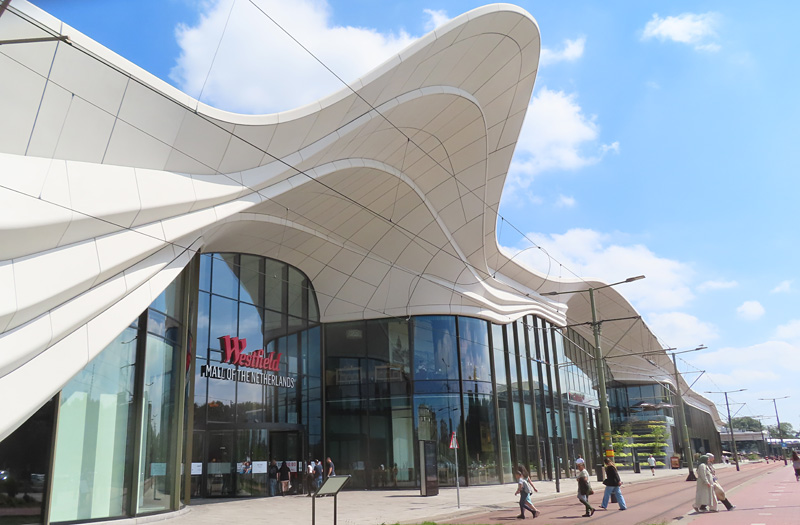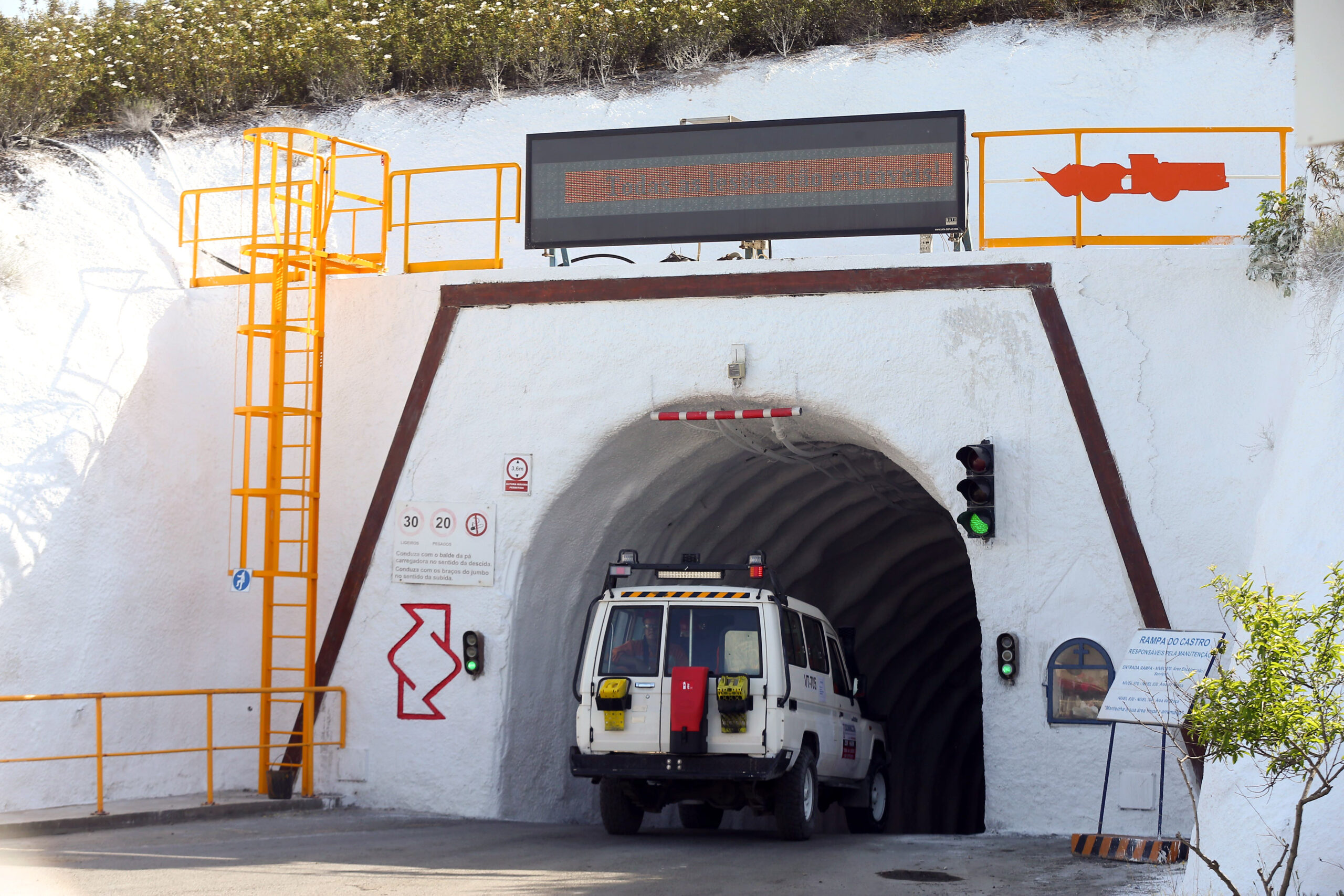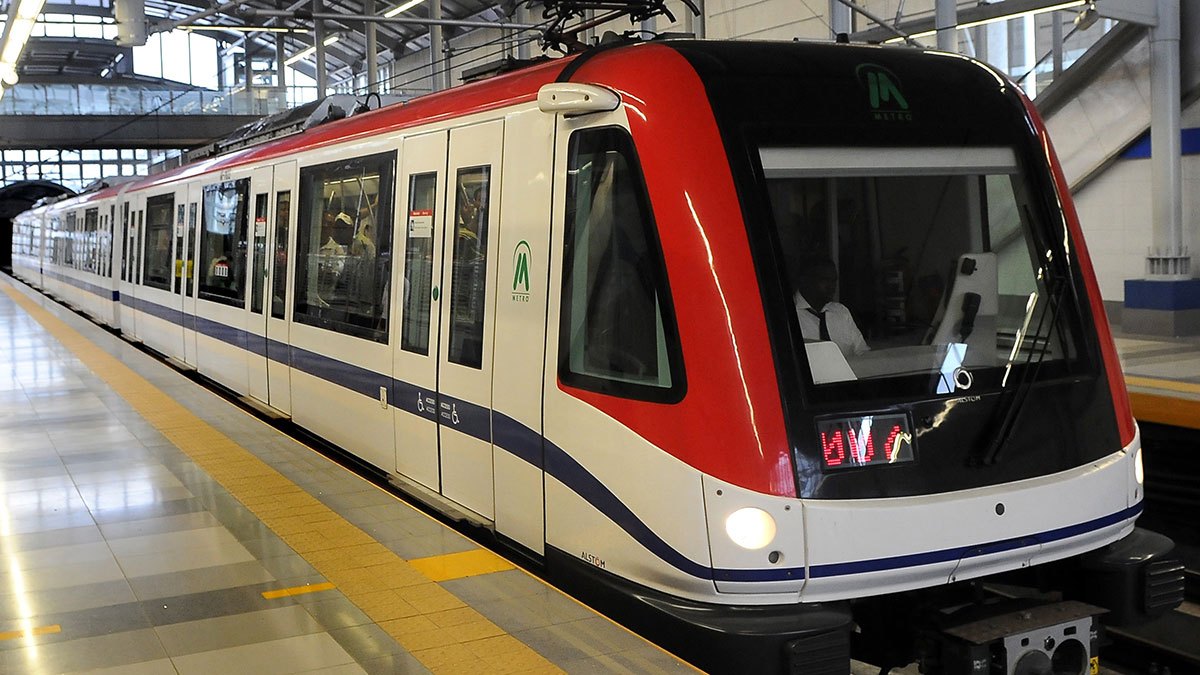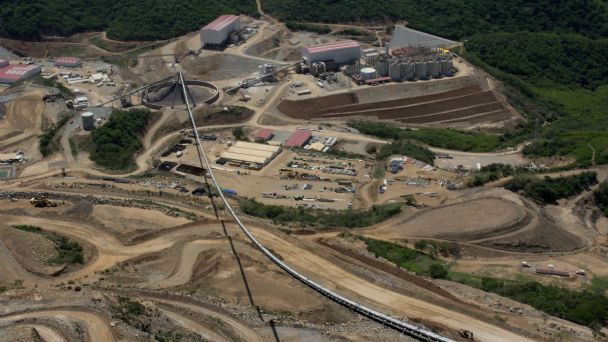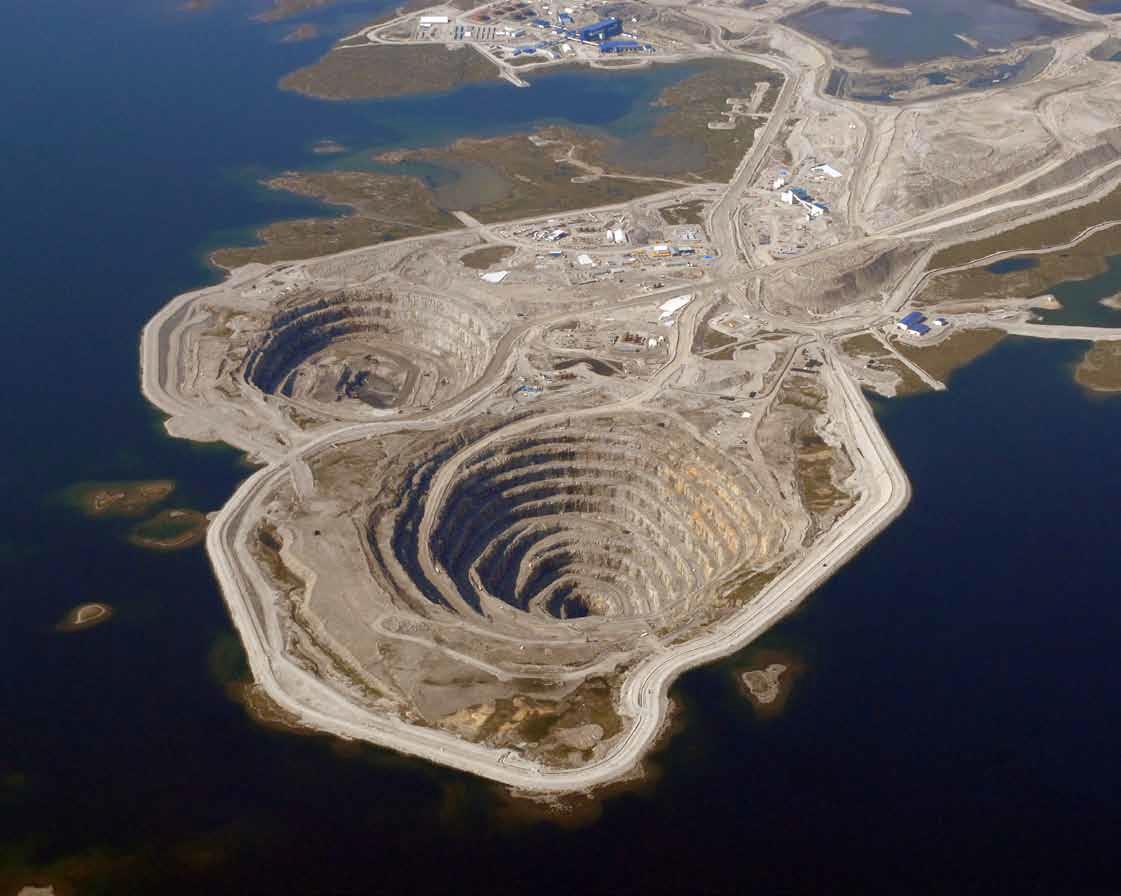
From the earliest days of exploration around Lac de Gras in Canada’s Northwest Territories, the Diavik Diamond Mine has worked closely with the Aboriginal people to protect their environment and share the revenue from the mine. Gay Sutton reports
Canada’s Northwest Territories is one of the world’s few remaining wilderness areas. Lying just south of the Arctic Circle, the land hibernates under a layer of ice during the dark and frozen winters then defrosts and bursts into riotous color through the warm and sunny summers. Herds of caribou migrate unhindered across thousands of miles of territory that extends from the Barrenlands of the north east to the fast flowing rivers of the Mackenzie Mountains in the west. Blending intimately into this rich tapestry of nature, the hardy people of the region once lived equally nomadic lives, intimately bound to the movements of the animals and the welfare of the landscape.
Today, these First Nations, Métis and Inuit people are learning a new role, migrating from the nomadic lifestyle of the past to community dwelling, paid employment and sustainable business, and they are being assisted in this by the mining companies working on their land. One of the companies determined to achieve environmental and social best practice is Diavik Diamond Mines Inc, a Rio Tinto subsidiary that operates the Diavik Diamond Mine as part of a joint venture with exclusive jewelry and watch manufacturer Harry Winston.
Diavik is one of three working diamond mines located in the Northwest Territories. “When the Diavik Mine opened,” commented Roy Erasmus Jr., CEO of Det’on Cho Corporation, the business arm of the Yellowknives Dene (pronounced Dennay) First Nation on whose lands the city of Yellowknife has grown, “two of the largest gold mines in Canada, the Giant Mine and the Con Mine which had operated here for over 50 years had just closed. The Giant Mine had left one of the largest contaminated sites in Canada – there’s 137,000 tonnes of arsenic trioxide buried underground. And the Yellowknives Dene received no benefit from the mine at all.”
Determined to redress that balance, Diavik’s management set out as it meant to continue. From its earliest days in the region, a close working relationship was established with the five First Nations, Métis and Inuit people living in the vicinity of the mine – the Yellowknives Dene First Nation, the Tlicho Government, the Kitikmeot Inuit Association, the Lutsel K’e Dene First Nation and the North Slave Métis Alliance. As a result of this liaison they devised a unique set of environmental and social agreements that extended beyond the requirements of the law,and aimed to minimize impacts to land and water and ensure the Aboriginal people are able to share sustainably in the wealth generated from their land.
Even before mine construction began, Diavik faced some interesting environmental challenges. The mining facilities were to be built on an island surrounded by the pure and pristine waters of Lac de Gras. The ore body, however, was located underneath the bed of the lake. “So water would flow into and through the mine, and would eventually flow back out into the lake,” said Colleen English, who ran the environmental monitoring programs at Diavik for six and a half years before being appointed superintendent of communities. “How could we construct the mine to eliminate these issues and how could we monitor the environment to ensure our impact was kept to a minimum?”
A team of engineers drawn from around the world designed two water and ice retaining dikes that would surround the three ore bodies. Extensively monitored for stability and water seepage along their length they are a triumph of engineering. Extremely powerful pumps remove water from the open pits, inside the dikes, and underground mines. The water is stored in a holding pond before passing through a state-of-the-art water treatment plant and then released back into Lac de Gras.
“We monitor every stage of this water flow through our Surveillance Network Program (SNP),” said English. “We have monitor points all over the island, looking at potential risks such as run-off water and the water quality in the processed kimberlite containment area (tailings pond).”
The water treatment plant is highly automated, continuously monitoring water quality, and providing the final level of control in the process. Turbidity, for example, can be used as an indicator of suspended metals in the water. If levels exceed 4 NTU, well below the 15 NTU required by the mine’s water license, outflow is automatically redirected back into the holding pond, protecting the lake water and providing time to assess and address any issues before discharge is resumed.
The lake itself is subject to intensive year-round monitoring, beginning around the mine and extending up to 30 miles downstream where the waters discharge into the Coppermine River. Water quality is not the only factor to be assessed; a careful check is also kept on wildlife and vegetation. “One of the biggest concerns at Diavik is the risk of increasing nutrient levels due to ammonia and phosphorus from blasting and groundwater inflows. If the nutrient levels go up, then we could see increasing levels of zooplankton and phytoplankton, invertebrates and fish.” To some it may seem counterintuitive to prevent an increase of productivity in the lake. “It’s not. We monitor these populations to ensure we do not have a significant impact on the dynamics of the lake.”
The effect of the mine on native wildlife, and the caribou in particular, is one of the primary concerns of the five community organizations, and Diavik signed an agreement with them to undertake rigorous wildlife monitoring. During the caribou migration, for example, the company performs weekly aerial surveys of the region to monitor the distribution and numbers of caribou around the mine site. “We also do behavioral surveys on the ground,” English explained, “to see how the caribou react to different types of infrastructure, how they cross roads, and reactions to noise levels.”
Wildlife in the region is diverse and information is gathered on species valued by the Aboriginal people. “There are wolverine, for example, and we use a hair snagging DNA sampling program to identify their numbers and sex ratios, to help determine the viability of the population in the area. Where possible, we try to partner with other mines and the local government to design programs that will contribute to regional data needs. Our aim is to try to answer a range of questions such as: is the mine an attractant or deterrent and does it change wildlife behavior or distribution?”
These questions are difficult to evaluate without baseline data showing the natural fluctuations over time, and the company is seeking to fill in some of those gaps through liaison and knowledge transfer with the communities. In one ongoing initiative, for example, a tent camp has been set up on the south side of Lac de Gras, and community members are invited there to do fish tasting studies and quantify any possible changes since mining began. They look similarly at changes in the caribou in the area or changes in dust levels on vegetation. This is then compared with the scientific data from the environmental monitoring programs.
The five Aboriginal communities play an important role in mine life, not only from the environmental perspective, but also as valuable members of the workforce. The social program developed at Diavik is an ambitious and innovative set of initiatives to improve employment skills, enable people to culturally adapt, and create sustainable businesses that will continue to operate once the mine has packed up and gone. To achieve this, the company has frequent meetings with key representatives of each of the communities and the business arms of those communities.
Mining companies operating on Aboriginal lands in Canada are expected to take part in an Impact Benefit Agreement with the local communities, and Diavik’s response to this illustrates its approach. “We don’t use the term Impact Benefit, we call them our Participation Agreements,” said English. “That’s because it’s not just a payout, it’s a two-way agreement where we work together as partners.”
One of the first community-based training initiatives that Diavik engaged in took place before the mine was constructed, and has proved to be a great motivator, demonstrating to the local communities exactly what they could achieve. “We went to the communities and asked them to identify key infrastructure that was missing, and then assessed what could be built locally that would then provide transferrable skills for employment at Diavik,” English said. “An example is an airstrip we helped build through partnership funding in one of the Tlicho communities about an hour and a half outside Yellowknife. We managed the project and recruited people from the community who were then provided training in how to construct an airstrip. The community benefitted from an airstrip that allowed their workers to fly direct to the mine site without commuting through Yellowknife, and many of those who worked on the project were then employed in construction at the mine.”
The initial community-based training program has evolved a long way since then and there is now a Mine Training Society, a formalized and highly effective independent body based in Yellowknife. Now largely funded by the Canadian government, and also comprising representatives from four Aboriginal organizations, Diavik Diamond Mines Inc., BHP Billiton Diamonds Inc., De Beers Canada Inc. and the territorial government, the Society analyses the training required at the mines and how it can be rolled out for communities in an appropriate way. Det’on Cho Corporation, for example, has a training center and graduates from its catering courses are taken on by Bouwa Whee Catering. “Our primary role in this program now,” said English, “is to provide job placements at the mine to support the various training programs. And we’ve had excellent results. From the last underground miner course that was held, we hired five of the six graduates.”
A major part of Diavik’s approach has been to help develop sustainable Aboriginal businesses in the area. “Throughout mine development, we looked at the types of services we needed, and if they did not exist in the local communities, we looked for reputable southern companies that could partner with local business on a joint venture basis. Now, many of the Aboriginal businesses are identifying and forming their own joint venture partnerships to grow their businesses within their own areas of interest,” English said.
Bouwa Whee Catering, which originated at Diavik during the early exploration phase, is typical of how this worked. Proactively supported by Diavik, the company was a joint venture between Det’on Cho and the PTI Group to provide catering and housekeeping services at the mine. During this long and valuable partnership, the Yellowknives Dene learned the intricacies of the catering business and put the necessary business processes in place in their own organization.
“Then in 2009 we bought them out,” Erasmus said. “When we were ready, Diavik audited our facility and our capacity, and awarded us the contract. We’ve been operating there since July 2010.”
The list of Aboriginal companies making this transition to wholly owned business is impressive, and many are taking it a step further to become truly sustainable. Tlicho Logistics, for example, is a 100 percent Aboriginal owned company that has branched out beyond Diavik to work on construction and remediation projects.
“Our vision,” Erasmus continued, speaking on behalf of Det’on Cho, “is to be able to export our business model anywhere in the world.” Interestingly, it’s not a matter of expanding the existing business. With a Yellowknives Dene population of just 1400 people, that would be impossible. “Our intent and desire is to expand within Rio Tinto. Most of their mines are located within the territories of other Aboriginal people, who also aim to develop their own people. So our business model is likely to be along the lines of a franchise.”
Closer to home, the organization’s strategy is for expansion. Trinity Helicopters was launched around 18 months ago and now operates 14 helicopters. Det’on Cho Logistics is operating at the De Beers Snap Lake Mine, and will be working at the Tahera mine when it reopens. The company has also diversified into general construction and is beginning to look at road construction.
For many people, transitioning from a nomadic lifestyle to a waged economy has undoubtedly been very difficult, and Diavik has been working to address many of the social issues. The mine’s rotational shift pattern of two weeks at the mine and two weeks at home has had a significant impact on family life, and support processes have been put in place both at the mine and in the home communities. Meanwhile, learning how to cope with money has also presented problems. “We can’t turn a blind eye to these negative impacts,” Erasmus said. “And the mine has been very good at trying to address those issues.”
“One thing that has changed over the last 10 years,” said Diavik’s VP operations, Marc Cameron, “is that one of the main community requirements was initially for jobs, training and employment, which you would expect. When we communicate with the communities now their focus has shifted more towards how we can support them with programs such as financial management courses, nutrition and life skills. And this now underpins our community outreach.”
All of this has been a continuous learning experience for the management at Diavik, an experience that they share with other mines in the Rio Tinto group. “Perhaps the biggest thing in all of this is that while we want to support Aboriginal organizations as they develop and learn to work with industry, there has to be willingness. You cannot force-feed such growth,” English concluded. “You need to be able to gauge the organization you’re working with and recognize whether they want that type of development.”
Diavik has proved that where there is a willingness, a great deal can be achieved. The best possibly legacy the company could leave behind is a range of stable businesses and an environment that allows for continued use of traditional lands.
DOWNLOAD
 NA-Nov11-Diavik-BRO-s.pdf
NA-Nov11-Diavik-BRO-s.pdf



